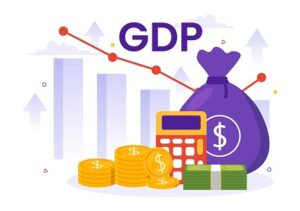Understanding Stagflation: A Looming Economic Concern
As experts in economics, we at Extreme Investor Network are closely monitoring the current state of the US economy and we have some insights to share. Recently, the Federal Reserve reported that nine out of the 12 districts in the US have experienced a decline in economic activity in August, signaling a concerning trend. This aligns with our own analysis, indicating that we may be heading towards a period of stagflation, where inflation remains high while GDP growth slows down.
While the US economy saw a 3% growth in the last quarter, many observers are optimistic about the recovery. However, it’s important to note that this growth is overshadowed by the fact that two-thirds of the economy is facing “flat or declining activity.” Consumer spending, a key driver of GDP, rose by 2.9% last quarter, but most of this spending is on essentials. When reports fail to account for taxes and dismiss essential items like food and shelter as “volatile,” it paints an incomplete picture of the economy.
It’s essential to understand that stagflation is not just about rising prices. It’s a complex phenomenon where economic growth slows down while inflation remains high. This can be seen in the latest jobs report, which showed a decline in manufacturing jobs while the public sector grew. However, growing government employment does not contribute to GDP growth and only adds to the national debt.
Looking ahead, we anticipate that inflation will continue to rise into 2028 due to shortages and geopolitical tensions, resembling the 1970s era of stagflation. As interest rates typically rise during economic expansions and fall during downturns, the current economic indicators suggest that the US may be entering a period of contraction.
Stay informed with Extreme Investor Network as we navigate through these challenging economic times and provide valuable insights for investors and stakeholders. Join our network today to gain access to exclusive analysis and expert commentary on the latest trends in the market.

